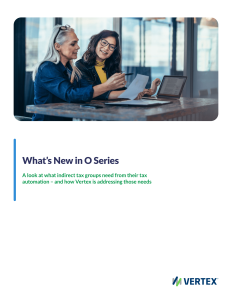Driving Success Through Employee Experience

In today’s rapidly evolving business landscape, organizations are discovering that employee experience (EX) is not just a buzzword—it’s a critical driver of success. Companies that invest in creating a positive, engaging, and supportive work environment are seeing substantial returns in productivity, retention, and overall business performance. But what exactly does it mean to drive success through employee experience, and how can organizations achieve it? Let’s dive into the key components that make up a successful employee experience strategy and how they can lead to significant benefits for businesses.
Understanding Employee Experience
Employee experience encompasses every interaction and relationship an employee has with their organization, from recruitment and onboarding to daily work life and career development. It includes everything from the physical workspace to the company culture, management style, and even the tools and technologies employees use. A positive employee experience is one where employees feel valued, supported, and motivated to contribute their best work.
Key Components of a Successful Employee Experience Strategy
- Onboarding and Integration: The journey starts with onboarding. A well-structured onboarding process helps new hires feel welcomed and integrated into the company culture. Providing them with the necessary resources, training, and introductions to key team members can set the tone for a positive employee experience.
- Work Environment: The physical and digital work environment plays a significant role in employee satisfaction. A comfortable, safe, and well-equipped workspace, along with user-friendly digital tools and systems, can enhance productivity and morale.
- Leadership and Management: Effective leadership is crucial for a positive employee experience. Leaders who communicate openly, provide constructive feedback, and support their teams can foster a culture of trust and respect. Regular check-ins and employee feedback sessions can help leaders understand and address any issues early on.
- Career Development: Employees are more likely to stay with a company that invests in their growth. Offering opportunities for professional development, such as training programs, workshops, and career advancement paths, can enhance job satisfaction and retention.
- Work-Life Balance: Promoting a healthy work-life balance is essential for maintaining employee well-being. Flexible work arrangements, wellness programs, and support for personal commitments can help employees manage their responsibilities and reduce stress.
- Recognition and Rewards: Recognizing and rewarding employees for their contributions is a powerful motivator. Implementing a system for acknowledging achievements, whether through formal awards or informal praise, can boost morale and encourage high performance.
- Culture and Values: A strong organizational culture that aligns with employee values can significantly impact engagement and loyalty. Creating an inclusive and supportive work environment where employees feel a sense of belonging can lead to higher levels of satisfaction and productivity.
Measuring the Impact of Employee Experience
To drive success through employee experience, organizations need to measure and analyze its impact. This can be done through various methods, including:
- Employee Surveys: Regular surveys can provide insights into employee satisfaction, engagement, and areas for improvement.
- Performance Metrics: Tracking key performance indicators such as productivity, absenteeism, and turnover rates can help assess the effectiveness of employee experience initiatives.
- Feedback Mechanisms: Establishing channels for employees to provide feedback and suggestions can help identify and address issues promptly.
Benefits of Investing in Employee Experience
Organizations that prioritize employee experience often see numerous benefits, including:
- Increased Productivity: Engaged employees are more motivated and productive, leading to improved business performance.
- Higher Retention Rates: A positive work environment can reduce turnover and the associated costs of recruiting and training new employees.
- Enhanced Customer Satisfaction: Happy and motivated employees are more likely to deliver exceptional customer service, leading to higher customer satisfaction and loyalty.
- Improved Innovation: A supportive and inclusive work environment can foster creativity and innovation, driving business growth and success.
Conclusion
Driving success through employee experience is not just about implementing a few initiatives—it’s about creating a holistic and continuous approach to employee engagement and satisfaction. By focusing on key components such as onboarding, work environment, leadership, career development, work-life balance, recognition, and culture, organizations can build a positive employee experience that drives productivity, retention, and overall success. Investing in employee experience is an investment in the future of your business, and the returns can be substantial.







